A place to seize food & fibre’s big opportunities
The Common Ground is a silo-breaker. The place where Aotearoa New Zealand’s food & fibre sector gathers to seize new opportunites and solve common challenges.
It’s a collaboration platform. A place where food & fibre thinkers and doers team-up, get funded and tackle shared issues like on-farm energy, land-use change and rural prosperity.
Through smart organisational design and shared resources – like a central data exchange – it’s where we transform a history of duplication, into a future of trust and genuine collaboration.
Presented in partnership between AGMARDT and KPMG New Zealand and with input from a diverse range of stakeholders, The Common Ground begins as a thought leadership report to spur conversations and gather sector-wide feedback. Including yours.
“A place to supercharge a culture of collaboration in the food & fibre sector.”
ThePlatform
The Common Ground concept would have two main functions – host Communities of Action to solve shared challenges and serve as the food & fibre sector’s ‘back- office engine room’.
Communities of Action
In a more agile industry good ecosystem, our people and resources will gather around issues, instead of industries. Through The Common Ground governance and support structure, industry bodies can pool resources together to form cross-sector Communities of Action (while retaining their independence and sharpening their focus on industry-specific issues).
United in these Communities of Action, we can tackle sector-wide challenges and high-value opportunities like energy, rural wellbeing, high value exporting, zero carbon production systems, sustainable oceans, protection of Taonga (IP/ mātauranga), water quality & quantity, diversification of producer income, future workforce & agri-education, soil health, rural prosperity, biodiversity, animal welfare and adapting to climate volatility.
Back-office engine room
With 150 organisations in the industry good system, it’s not surprising we spend $9+ million annually duplicating back-office services like software, accounting, legal or HR. The Common Ground would host a voluntary single standard enterprise resource platform accessible to all participating organisations to cut these costs for all.
It’s also the ideal host for a shared data exchange service – reducing data-entry duplication for individual producers – and could deploy services most industry bodies need, but can’t always afford, like soil & water heath teams, R&D support, economists, futurists or policy analysts.
“In times of crisis, the sector pulls together to make collective impact. We need to combine this same spirit with good design now, to get in front of the crises of the future.”
WHYNOW?
Without doubt, industry good organisations have been fundamental to the success of our sector. But what got us here, won’t get us there. The next food & fibre generation need a system capable of meeting unprecedented challenges and realising big opportunities.
The Common Ground is one vision for a fit-for-purpose future system. The platform uses collaborative design to build trust and overcome the four key constraints of the current system:
“This is about setting-up the next generation for success. Let’s begin that conversation.”
Podcasts &Panel
In this Countrywide podcast series, we go deep on The Common Ground with the help of food & fibre producers, thinkers and leaders.
Hear from some of the team behind The Common Ground thought leadership report at the E Tipu 2024 summit.
Frequently Asked Questions
What is the Industry Good system?
Figure 1: An overview of the food and fibre industry good landscape
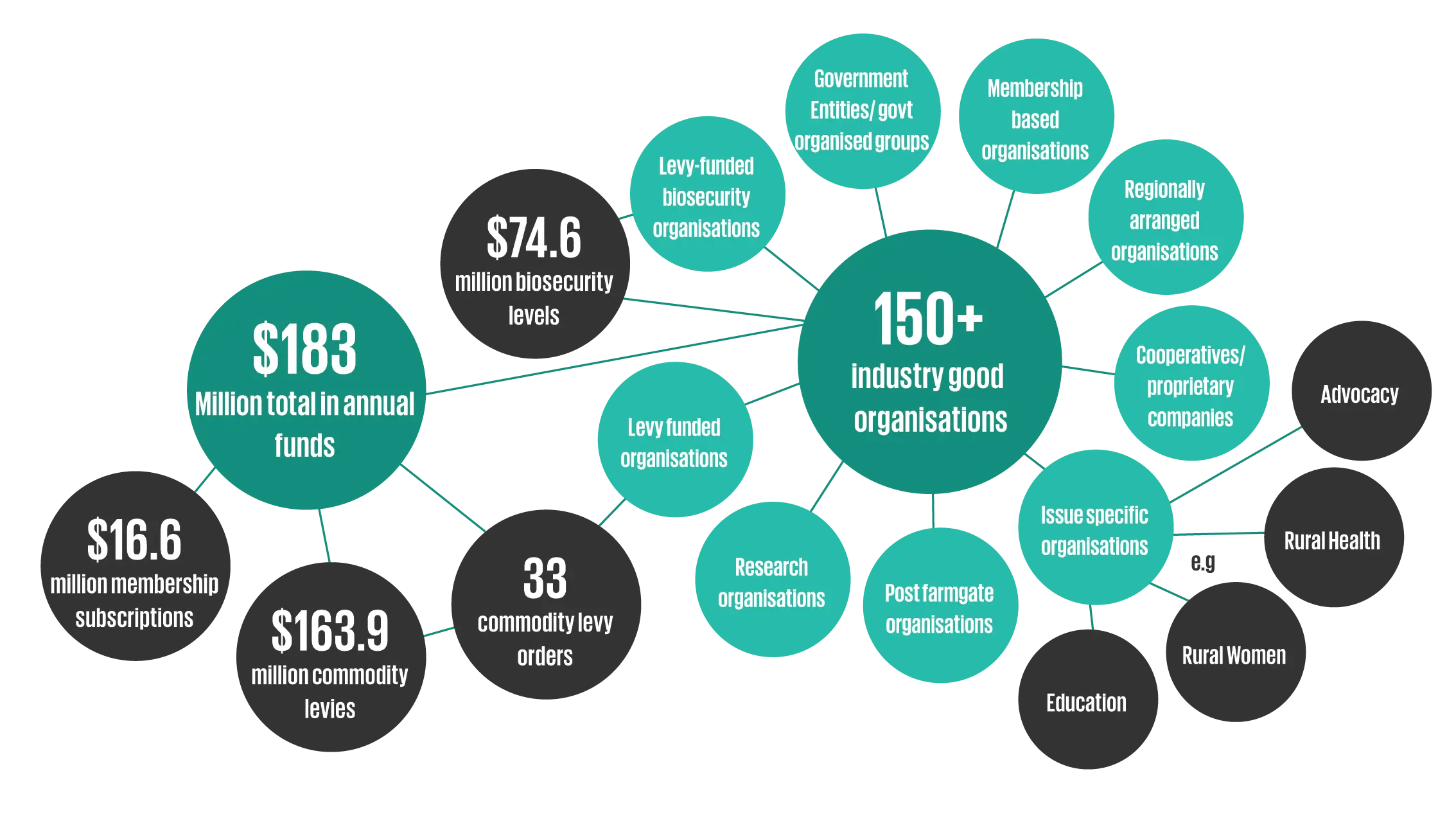
Figure 2: Industry Good ‘good’
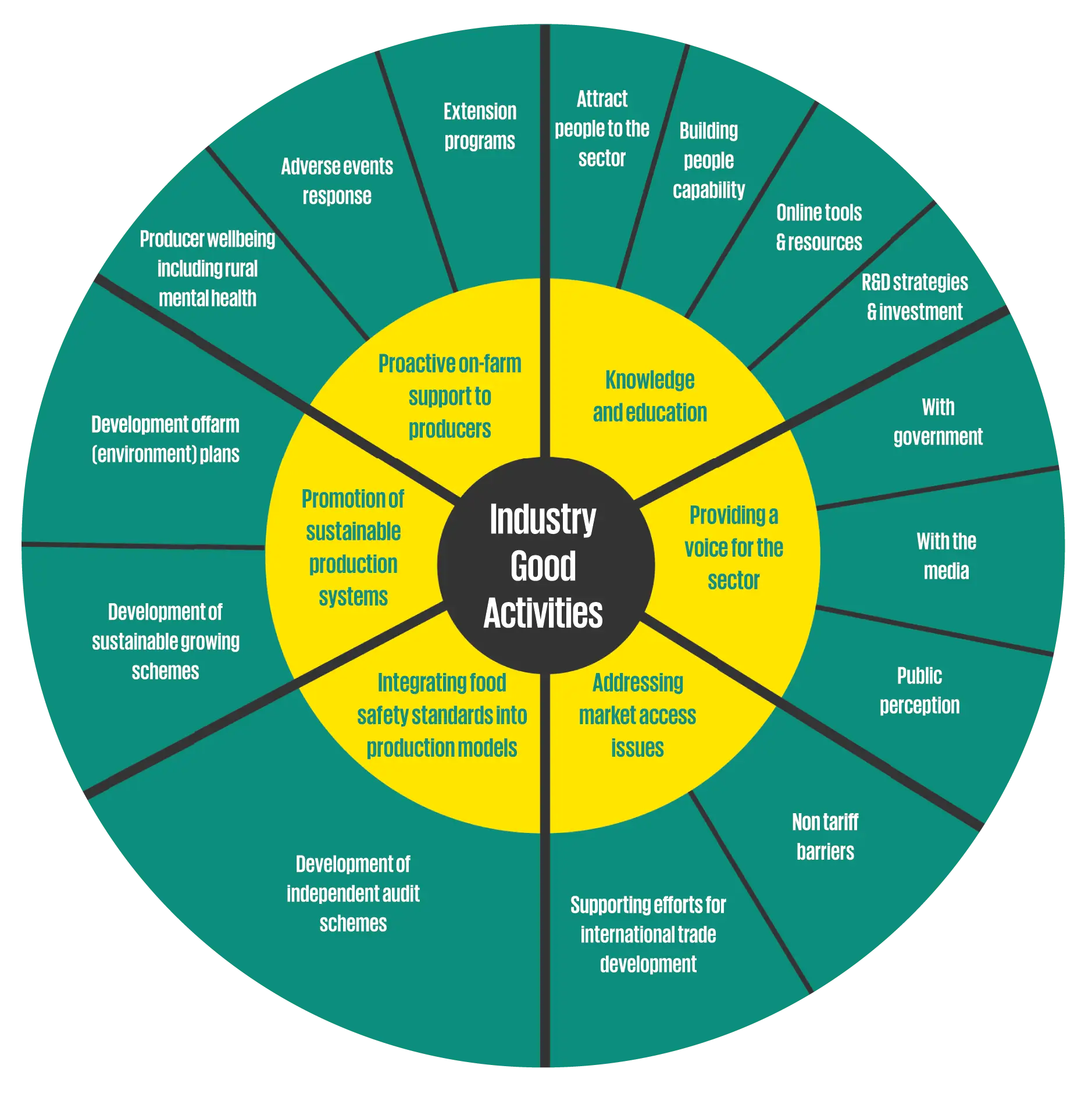
Who would lead The Common Ground?
The Common Ground would likely have a Board of Trustees made up of industry leaders, Taumata (Māori) and independents. Appointments would be based on skillsets needed for the future and could be nominated by Common Ground partners.
Communities of Action would have their own leadership groups, chosen on personal experience and mana regarding an issue, over specific roles or organisational affiliations.
Would Common Ground partners still be independent?
Yes. Each organisation participating in The Common Ground or a Community of Action would retain its autonomy and determine for itself the right level of funding or other support for an initiative. Partners would also remain free to focus on industry-specific issues separately from The Common Ground.
For example, the Common Ground wouldn’t create a Community of Action around a specific tomato fungus. That would be best led by the relevant industry organisation(s). That same organisation may however consider contributing funds and capital to a pan-sector Community of Action on water quantity and quality – leveraging the resources of other Common Ground partners to get drive the most impact on that wicked problem.
How would The Common Ground be funded?
The Common Ground would not be limited to industry good organisations – food & fibre businesses aligned to values and issues of a Community of Action would be welcome to join. This would open-up alternative funding options – like targeted government investment, public-private partnerships or foreign investment. The AgriZeroNZ joint venture on emissions reduction is a good example of how collaboration can open up new funding mechanisms and there are multiple international examples of ‘co-opetition clusters’ where partners financially contribute towards shared goals.
What are the major differences between the current system and The Common Ground concept?
- Funds directed at cross-sector issues are pooled from across the value chain, including producers, processors, exporters and others. This relieves the funding burden from producers, limits duplication & inefficiency and opens up new funding mechanisms.
- Funds are not ringfenced to specific industries, gathering instead around cross-sector Communities of Action targeting shared mega-issues. This will shift the focus onto broad sector good, instead of impact in a specific industry silo.
- Leadership will be appointed rather than elected.
- Membership will be a long-term commitment. There will be no ‘annual opt-out’ to ensure long-term decision making and investment.
Figure 4: The Common Ground: System and stakeholders
How would Communities of Action form?
Figure 5: The Common Ground: How it works
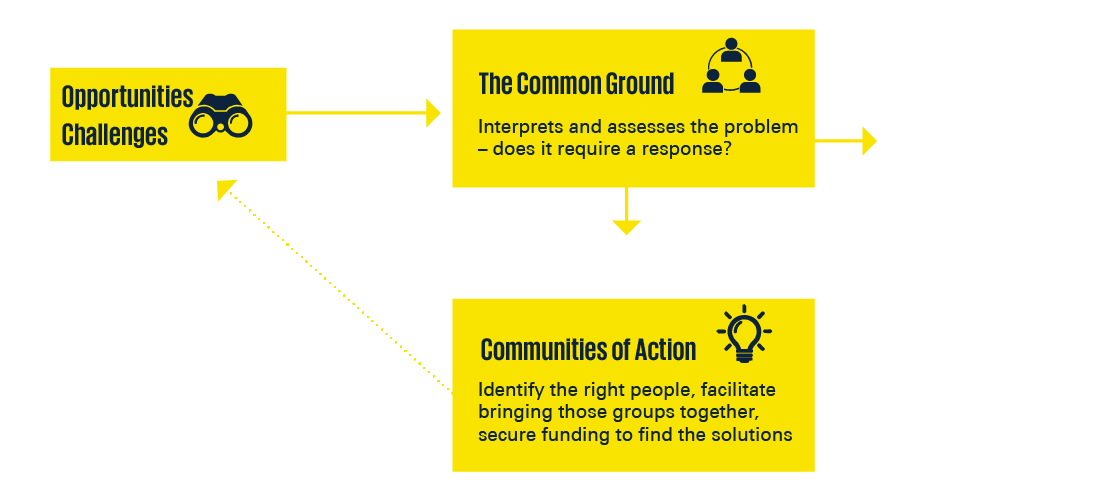
What would be the role of government?
Would The Common Ground do advocacy work?
The Common Ground may undertake select advocacy where Communities of Action identify a need for it e.g. promoting the food & fibre sector as the best place to work. By their nature, Communities of Action would provide a clear point of engagement for government, reducing the need for duplicated lobbying and advocacy in these areas.
In other areas, organisations would continue to advocate on regulatory policies relevant to their industry.
In the long-term, The Common Ground would help foster the kind of collaborative, proactive behaviour and problem solving that would head-off regulation or market changes before they emerge. As an example, the New Zealand wine industry self-organised a sustainability programme decades before any government or market requirements – a result of strong market insight and internal partnership.
What happens when Common Ground partners disagree?
During conflict, partners would be directed back to the platform’s underlying principle – prioritise the broader sector issues over industry-specific interests. This would be set in a charter or other founding document, alongside other principles like a commitment not to disagree publicly or to spend more time discussing similarities than differences.
Isn’t this just one more organisation in an already crowded space?
That’s a fair point. We tried to find a middle ground with the Common Ground – between calling for a more forceful structural change (like a revision of the Commodity Levies Act 1990) and yet more talk - and little action - towards genuine collaboration. The Common Ground sets up a proposed structure for industry good organisations to start to practice collaborative behaviour and build trust over time, starting with the issues where it makes most sense to work together. Over time, and as this sense of trust and collaboration becomes embedded in the sector, it’s plausible that some industry organisations might naturally consolidate.
Why should producers support this?
In short, less wasteful duplication and the chance to invest more of your levy or membership dollar in solving the wicked issues threatening your bottom line - now and into the future.
Many producers currently pay levies and membership fees to multiple industry organisations, who at times work in opposition to each other or duplicate work. An approach like the Common Ground would support the industry good system to better align with the diversified food & farming business anticipated in the future.
Isn’t the food & fibre sector already collaborating on big opportunities?
How might The Common Ground start?
Once the ground rules are set, the best way to build trust in the system would be to focus on issues with broad agreement across the industry good ecosystem, like Biosecurity or learning how we might best apply AI. As trust and the collaborative muscle grows, Communities can form around more complex issues.
The Common Groundin the Media
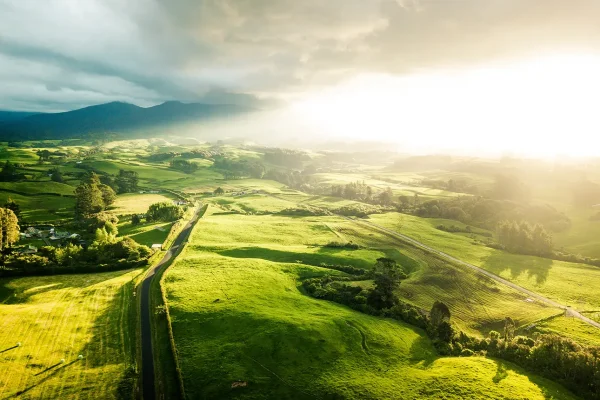
Get involved
We’re interested in feedback from all corners of Aotearoa’s food & fibre sector on how we genuinely design for collaboration and set up future generations for success.
What do you think about The Common Ground?


